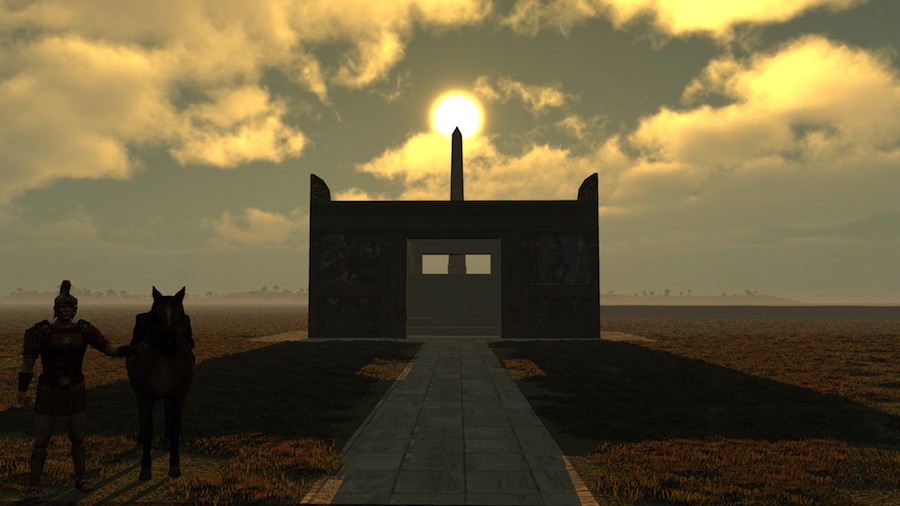
Ancient Roman Sundial Secrets Revealed with Help from NASA Data

There is nothing I love more than a great astronomical history mystery story and today our sister site LiveScience has this great one to share: Using NASA data and computer simulations, scientists have managed to finally reveal exactly how the sun lined up with an Egyptian obelisk at the heart of an ancient Roman sundial.
The new study apparently settles a long-standing mystery of the Ara Pacis ("Altar of Peace"), which dates back to the year 9 B.C. and was built to honor an era of peace ushered in by Rome's first emperor Augustus, according to LiveScience. That era was known as the Pax Romana.
In ancient times, the Ara Pacis building on the Tiber River doubled as a giant sundial —or gnomon —with the help if a nearby Egyptian obelisk taken from Heliopolis. Historians have long suspected that the sun would line up with the obelisk and Ara Pacis to cast a shadow in the building's plaza on Sept. 23, the birthday of Augustus. But using computer simulations and NASA's star-plotting Horizons System, the scientists discovered the alignment actually occurs on Oct. 9, which is the annual festival of the Temple of Palatine Apollo. Neat, huh? I love archaeoastronomy. You can read the full story here on LiveScience by Megan Gannon.

Follow us @Spacedotcom, Facebook and Google+.
Get the Space.com Newsletter
Breaking space news, the latest updates on rocket launches, skywatching events and more!
Join our Space Forums to keep talking space on the latest missions, night sky and more! And if you have a news tip, correction or comment, let us know at: community@space.com.

Tariq is the Editor-in-Chief of Space.com and joined the team in 2001, first as an intern and staff writer, and later as an editor. He covers human spaceflight, exploration and space science, as well as skywatching and entertainment. He became Space.com's Managing Editor in 2009 and Editor-in-Chief in 2019. Before joining Space.com, Tariq was a staff reporter for The Los Angeles Times covering education and city beats in La Habra, Fullerton and Huntington Beach. In October 2022, Tariq received the Harry Kolcum Award for excellence in space reporting from the National Space Club Florida Committee. He is also an Eagle Scout (yes, he has the Space Exploration merit badge) and went to Space Camp four times as a kid and a fifth time as an adult. He has journalism degrees from the University of Southern California and New York University. You can find Tariq at Space.com and as the co-host to the This Week In Space podcast with space historian Rod Pyle on the TWiT network. To see his latest project, you can follow Tariq on Twitter @tariqjmalik.









